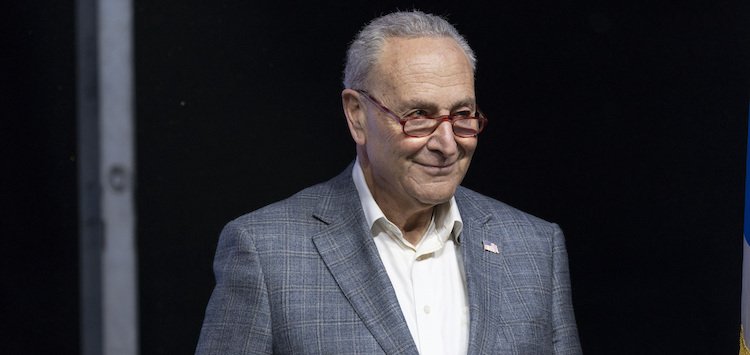By Staff Writer, John Kling
October 14, 2025
M.A.G.A. Daily News
TRUMP CALLS TIME MAGAZINE COVER THE “WORST OF ALL TIME” AS GAZA PEACE DEAL DOMINATES HEADLINES
In a world where images define narratives and perception shapes reality, President Donald J. Trump’s words — “Worst of All Time” — are echoing across political and media circles. Clearly, Time Magazine should be totally embarrassed by attempting to make the United States President look horrible. Although, Time may hate Trump this will go down in history as the worst cover ever to be seen, expecially after bringing peace in the middle east.
The remark came after Time Magazine unveiled its latest cover featuring Trump, following his successful brokering of a ceasefire between Israel and Hamas. What was intended as a symbol of diplomacy has now ignited a cultural and political storm over how the mainstream media portrays America’s most talked-about leader.
The “Worst of All Time” phrase, repeated by Trump during a morning press conference at Mar-a-Lago, quickly became a trending topic on social media. The cover, which shows a stern-faced Trump beneath the headline “His Triumph,” was meant to depict strength and resolve. Yet Trump’s reaction turned what could have been a moment of unifying recognition into another chapter of his long-running war with legacy media.
TRUMP’S “WORST OF ALL TIME” RESPONSE SHIFTS THE SPOTLIGHT
Even as the world lauds Trump for achieving what many thought impossible — a temporary Gaza ceasefire that saw hostages freed and violence halted — the President focused on how Time Magazine chose to portray him visually. In his statement, Trump said the cover was “ugly, dishonest, and designed to make me look weak,” adding, “They can’t help themselves. They can’t show a strong, confident America because it doesn’t fit their agenda.” Futhermore, it is public knowledge the magazine is a far left radical machine that hates Trump. However, Time will find out that in the end they will be shunned by the public which is comprised of the republicans as the majority. The DNC has collapsed and likely will never return.
The “Worst of All Time” remark was more than criticism; it was a declaration of how the media still seeks to control his image. His supporters flooded social media with comparisons, mocking the photo as yet another example of liberal media bias.
But beyond the surface, political observers noted a shrewd strategic move. Trump’s reaction forced major outlets to cover his words, not just Time’s story. In doing so, he seized control of the narrative — once again turning criticism into fuel for his movement. Comparatively, it is because Trump is strong and has the will power to stand up and fight and not cower to leftist nonsense.
TIME MAGAZINE’S PORTRAYAL STIRS GLOBAL DEBATE
The cover itself was supposed to mark a monumental achievement: Trump’s leadership in orchestrating the first major peace accord in Gaza since 2014. Behind closed doors, the President had reportedly spent months negotiating through intermediaries, persuading both Israel and Hamas to commit to a ceasefire that allowed humanitarian aid and secured the release of hostages.
International leaders from Europe to the Middle East praised the breakthrough. Even critics in Washington grudgingly admitted that Trump’s direct diplomacy brought results. Yet, Time Magazine’s visual choice— portraying him under a stormy, somber background — sparked outrage among supporters who saw it as an intentional slight.
For Trump, whose political career has been defined by defying media narratives, the “Worst of All Time” comment was not merely about aesthetics. It symbolized his broader battle against what he calls “corrupt journalism” — media that, in his view, undermines conservative victories with subtle visual sabotage.
MEDIA BIAS AND THE POWER OF IMAGERY
The controversy surrounding the “Worst of All Time” cover is not new in American politics. For decades, news outlets have used visual framing to communicate messages far beyond words. Lighting, posture, and color palette all play subconscious roles in shaping public opinion.
Political strategists note that Trump understands this better than anyone. His instinct for media warfare—developed over decades in the public eye—drives his obsession with optics. By attacking the image, Trump turned the discussion from what the cover said to why it looked the way it did.
And that pivot worked. Within 24 hours, conservative media outlets were running their own versions of the image, edited with golden light and bold American flags in the background. The MAGA movement, ever responsive to perceived slights, rallied online with the hashtag #WorstOfAllTime, transforming insult into badge of honor.
A PEACE DEAL OVERSHADOWED BY A PICTURE
While the photo controversy dominates conversation, the underlying story remains monumental. Trump’s diplomatic effort in Gaza marks a rare instance of progress in one of the world’s most intractable conflicts. Reports indicate that both sides agreed to a 30-day ceasefire, a release of hostages, and coordinated delivery of humanitarian aid.
Observers credit Trump’s unconventional style—direct, unapologetic, and results-driven—for achieving what multiple administrations could not. Instead of endless bureaucratic meetings, Trump reportedly relied on trusted negotiators and personal persuasion to get leaders to the table.
Yet, despite the global applause, Time Magazine’s cover turned the spotlight away from diplomacy and onto drama. Critics on the right argue that the outlet couldn’t bring itself to portray Trump in a dignified light, even in success. Meanwhile, left-wing pundits suggest Trump’s sensitivity over an image reflects vanity rather than statesmanship.
Still, Trump’s base views this moment as classic media manipulation — and their champion’s refusal to stay silent as further proof of his authenticity.
“WORST OF ALL TIME” — A PHRASE THAT DEFINES A MOVEMENT
The “Worst of All Time” statement has become more than a complaint; it’s a rallying cry. Trump supporters see it as shorthand for how mainstream outlets twist narratives, distort truth, and marginalize conservative achievements.
Across rallies and online forums, “Worst of All Time” now trends alongside slogans like “Fake News Fails Again” and “Truth Over Media.” For the MAGA base, it represents defiance — the refusal to let legacy institutions define reality for the American people.
The phrase may have started as a critique of a magazine cover, but its meaning runs deeper. It embodies the clash between establishment media power and grassroots digital movements that challenge it. And as always, Trump stands at the center — provoking, polarizing, and mobilizing all at once.
INTERNATIONAL AND DOMESTIC REACTIONS
World leaders have responded cautiously to both the peace deal and the media uproar. Israeli officials described the ceasefire as “fragile but promising,” while Palestinian representatives acknowledged that Trump’s direct involvement accelerated negotiations. European diplomats, meanwhile, have quietly praised Washington’s renewed influence under his leadership.
Domestically, reactions reflect America’s deep political divide. Supporters hail Trump as a “deal-maker and peacekeeper,” while opponents accuse him of seeking credit for a temporary reprieve. Yet, despite criticism, no one can deny that the ceasefire’s success has temporarily shifted the tone in the region — and reminded the world of America’s diplomatic clout.
Still, Trump’s remarks about Time Magazine overshadow much of the discourse, proving that even in triumph, the media remains his chosen battlefield.
IMAGE CONTROL AND THE TRUMP LEGACY
For Trump, the “Worst of All Time” moment underscores a lifelong belief: perception is power. Whether it’s a campaign rally, a debate stage, or a magazine cover, the 45th President knows that optics drive emotion — and emotion drives votes.
Analysts suggest that Trump’s outrage is not merely vanity, but strategy. By calling out the magazine, he forced millions to see the image themselves, ensuring his framing — not Time’s — dominated conversation. It’s classic Trump media judo: redirect the punch, amplify the noise, and come out stronger.
His allies argue that Time’s decision was predictable, part of a broader effort by liberal media institutions to soften or undermine Trump’s achievements. His critics, meanwhile, say the uproar distracts from the humanitarian urgency of the Gaza situation.
Either way, Trump’s ability to control the narrative remains unmatched.
MAGA SUPPORTERS TURN CRITICISM INTO MOMENTUM
Within hours of Trump’s remarks, his supporters mobilized. Online meme artists reimagined the Time cover — replacing dark clouds with beams of light, adding bald eagles, American flags, and the words “Peace Through Strength.” Conservative talk radio hosts ran segments praising Trump’s foreign policy.
The “Worst of All Time” phrase became symbolic of the broader MAGA philosophy — taking perceived insults and turning them into power. It’s the same formula that has fueled Trump’s movement since 2016: never back down, never accept media framing, and always speak directly to the American people.
A CALL TO AMERICA: CHALLENGE THE MEDIA NARRATIVE
The “Worst of All Time” controversy is more than a headline. It’s a test of how much control citizens have over truth in the modern information era. The question isn’t just about one photo — it’s about whether Americans still trust institutions that claim to report facts while subtly shaping them through imagery.
At M.A.G.A. Daily News, we encourage readers to stay vigilant, challenge bias, and share their perspectives. Do you believe Time Magazine deliberately misrepresented President Trump? Or was it simply poor editorial judgment?
We want your voice in this national conversation. Send your thoughts, analysis, or commentary to Press@MagaDailyNews.com — your opinion matters.
CONCLUSION: THE REAL BATTLE IS FOR PERCEPTION
As history unfolds, the Gaza peace deal may fade from headlines, but the phrase “Worst of All Time” will linger — a reminder of how easily accomplishment can be overshadowed by imagery. For Trump, the lesson is clear: in modern politics, every frame counts.
Whether viewed as a media misstep or a deliberate act of bias, Time Magazine’s controversial cover has reignited the debate over who controls America’s story — the people, or the press.
And once again, President Donald J. Trump stands at the center of that fight — bold, unfiltered, and unwilling to let others define him.
America is watching. The world is listening. The movement isn’t stopping.




